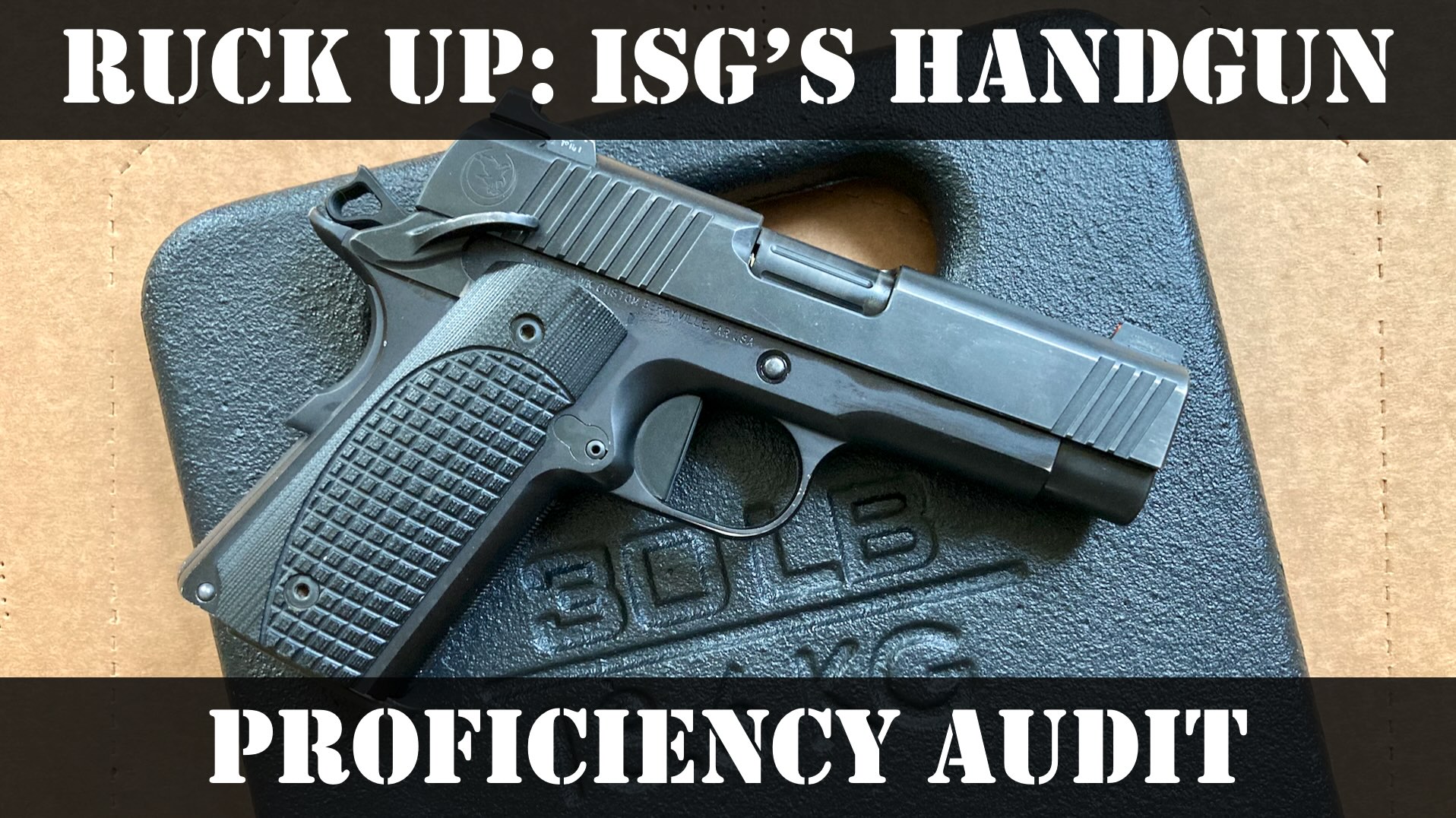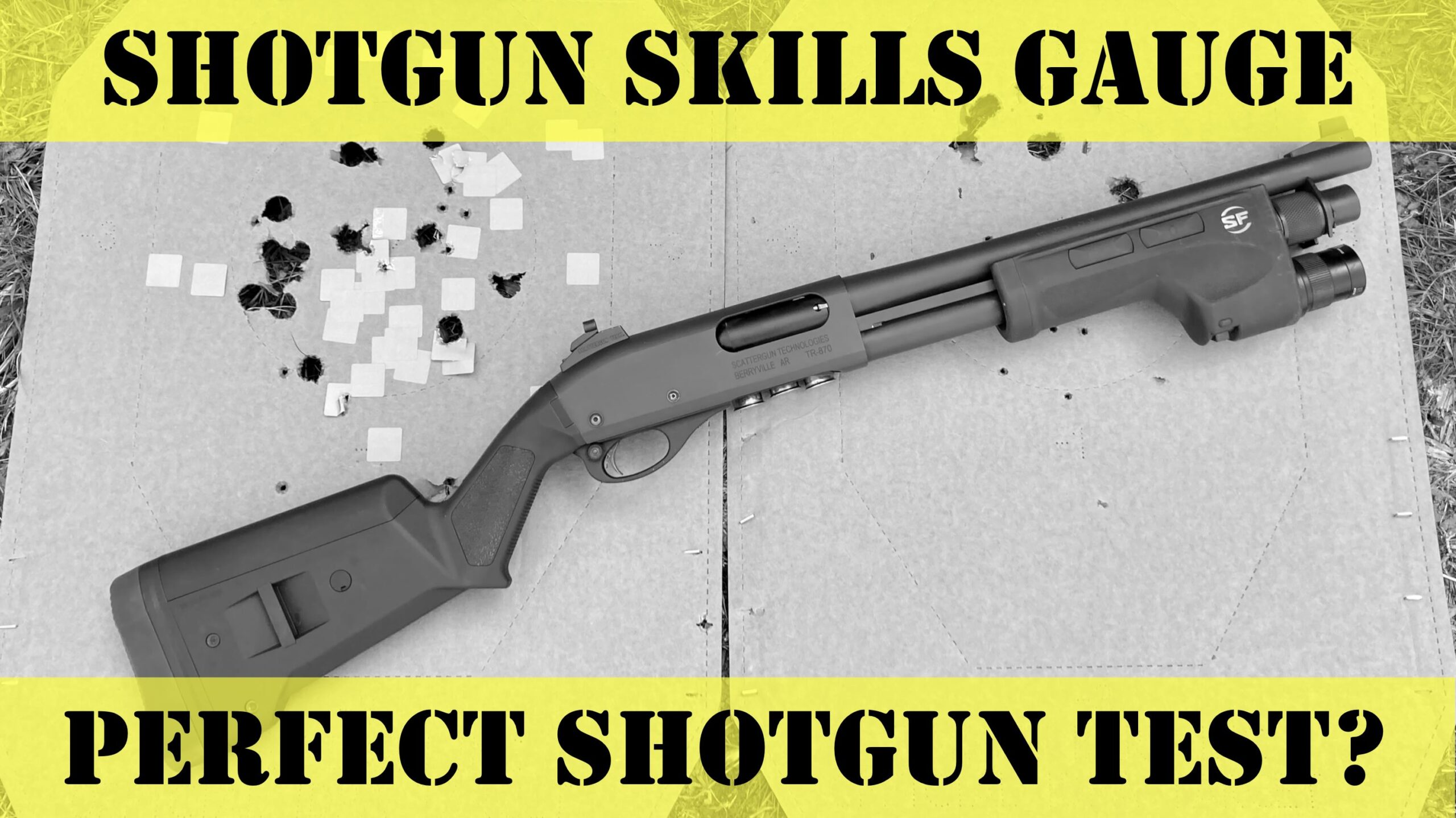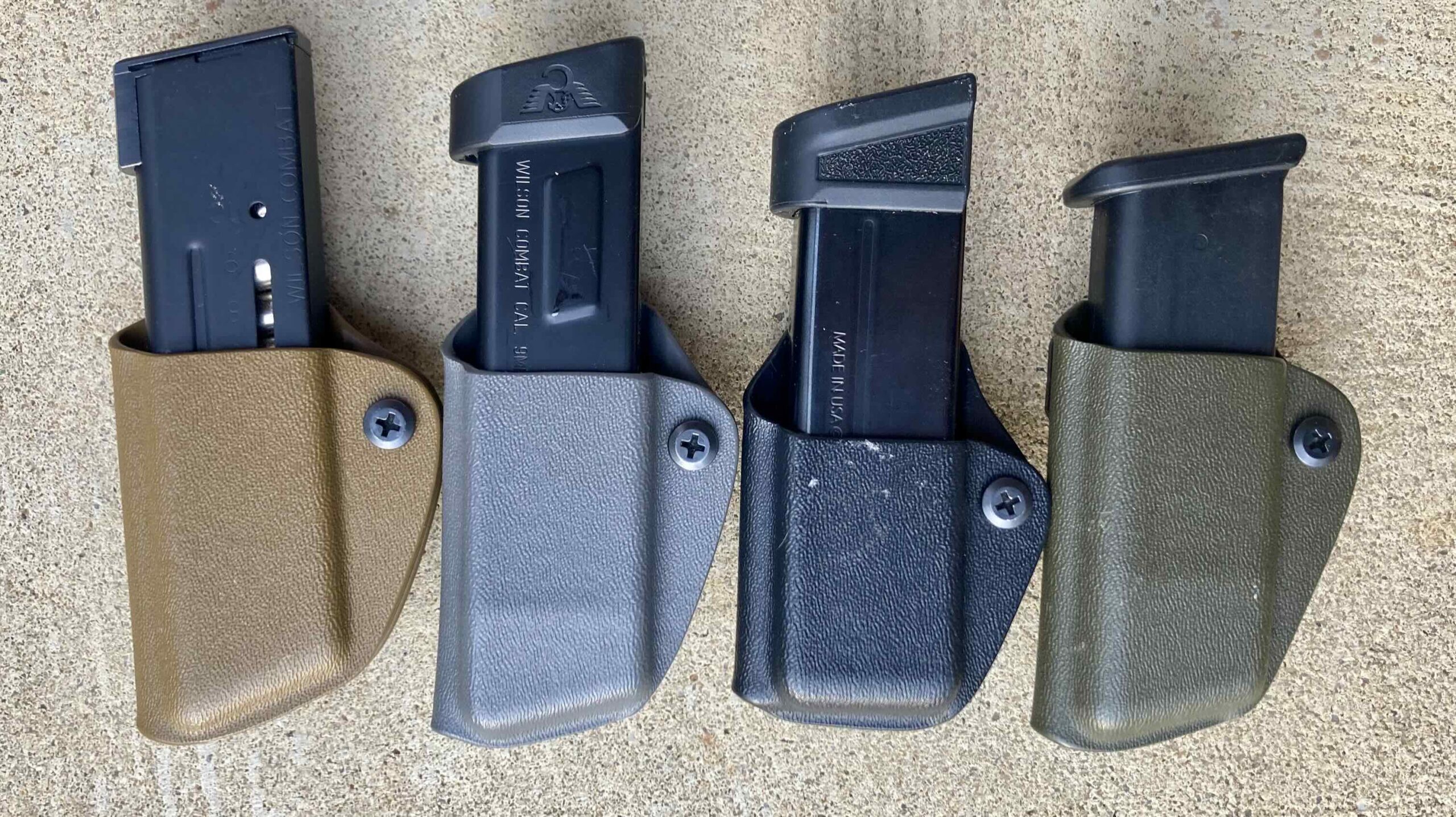Some of you have expressed interest in the defensive 1911. Some others have written in with more general questions about 1911s. These days there aren’t a whole lot of people – at least people of my generation – taking 1911s very seriously. Today I’m going to talk about some reliability factors of the defensive 1911, maybe a few things to think about before taking up the 1911.
Caveat
I want to make clear that I am not trying to convince anyone to carry a 1911. I’m also not making a case that the 1911 is better in some way than anything else. It has some huge disadvantages and I am more than willing to acknowledge them. The world is much easier for the person who decides to carry a Glock 19. Every accessory under the sun is available to you, courses of fire are designed around your magazine capacity, and every trainer in the country will be happy to work with you.
On the other hand… There are plenty of reliable pistols out there. The 1911 works – objectively works – better for some shooters than anything else. Again, there aren’t a lot of people talking seriously about the defensive 1911, so that’s where this article comes in. I will probably be in and out with 1911 information for the foreseeable future.
Reliability, reliability, reliability.
Reliability is the single most important aspect of any defensive handgun. We all know that. What we don’t all know is that 1911s can be reliable – sometimes insanely reliable. We have been told so frequently that 1911s aren’t reliable that even I have sort of started to believe it. But that contradicts my own experience. I was issued, trained exhaustively, and deployed to combat with a 1911 in the military.
I put tens of thousands of rounds through that gun on a typical deployment “work-up” cycle, and malfunctions were about as rare as they come. The 1911 can absolutely be reliable… but if you pick up any random gun off your gun dealer’s shelf, a random 1911 is less likely to be reliable than, say, a random Glock or M&P. Why is that? There are a number of reasons that influence 1911 reliability. I hope the information here will help you make the best decision possible.
First, “1911” is a pattern, not a pistol. Anyone from Taurus to Cabot Custom can – and does – make 1911s, ranging in cost from a few hundred dollars to over ten thousands. Obviously there is a massive array of quality in such a broad price band. That doesn’t mean that you have to spend thousands of dollars to get a decent 1911, but you may get what you pay for. What manufacturers’ 1911s do I recommend?
1911 Reliability: Manufacturer
I’m going to do something I rarely do: list some manufacturers by name. Unfortunately I don’t have personal experience with everything I’m recommending here. I’m going on what I have heard some top-level gunsmiths and shooters recommend, as well as some of my own personal experience.
$500-1,000: Rock Island Armory (RIA). This is a brand that I have little experience with but hear great things. My only experience was shooting a friend’s RIA 1911 in .22 TCM. However, my buddy Mike Seeklander won the IDPA BUG division in 2014 with a compact RIA 1911, and I’ve heard him rave about that gun. I’ve also heard plenty of other good things about RIA guns, but again, can’t recommend them on the basis of personal experience.
$1,000+: Colt and Ruger. Weirdly, I have no experience at all with Colt 1911s. None. (Though I do have a T&E relationship with Colt – if you guys would like to see a Colt – or Ruger for that matter – 1911 reviewed here, let me know). I do have a decent body of experience with Ruger 1911s, though. I’ve reviewed their 10mm model and really enjoyed it, and have some trigger time with a couple of their .45s. They aren’t bad guns at all. Of course they aren’t as refined as some of the more costly offerings on the market but they are very solid, very reliable handguns.
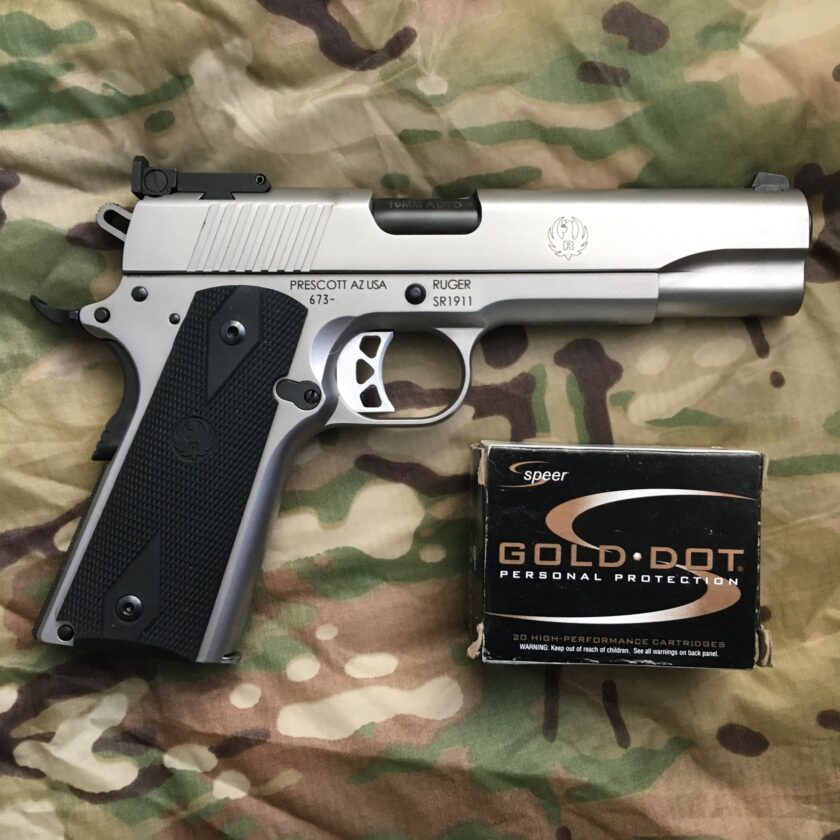
$1,500+: Dan Wesson. If you can afford to step into this range I would recommend Dan Wesson 1911s. I have a little experience – not as much as I’d like – but all my experience has been good. And everything I hear about DW 1911s is positive. The Dan Wesson firearms are going to be reliable, are going to have most of the custom touches you’ll want, and are going to be much more refined than the Rugers or RIAs. They are going to be very solid guns.
$2,500+: Nighthawk Custom or Wilson Combat. Actually…it gets pretty hard to go wrong if you’re spending this kind of coin on a 1911. There are tons of reputable names out there like Les Baer and Ed Brown. You have the best chance of getting a reliable gun from this price range but I have to be honest – I wouldn’t start here. If you have minimal experience with the 1911 you should probably find out if you like it or not before sinking this kind of money into one. On the other hand, if you really, really like the 1911 you’ll probably end up in this price bracket at some point.
There are plenty of other manufacturers making GREAT 1911s and just because a manufacturer isn’t on my list doesn’t mean I’m condemning them. There are mind-blowing reliable 1911s from every manufacturer out there. Its just that your odds of getting one of the reliable ones may not be quite as high with other manufacturers.
1911 Reliability: Frame Size
I have written about this just a bit before but there are a couple of other factors that influence 1911 reliability. The first is. The appeal of a scaled-down 1911 is undeniable. The full-sized 1911 is a large handgun, and if you’re going to carry, you’re going to want something a little bit smaller. Completely understandable – I don’t want to carry a full-sized 1911.
However, there is some X-factor with the 1911 that, generally speaking, means when you reduce size you reduce reliability. This has to do with all sorts of stuff that is – again – above my pay grade, like slide mass and speed and timing. If I had to pick up a random 1911 and expect it to run, I would give myself the best possible chances of success and make it a full, 5″ Government model.
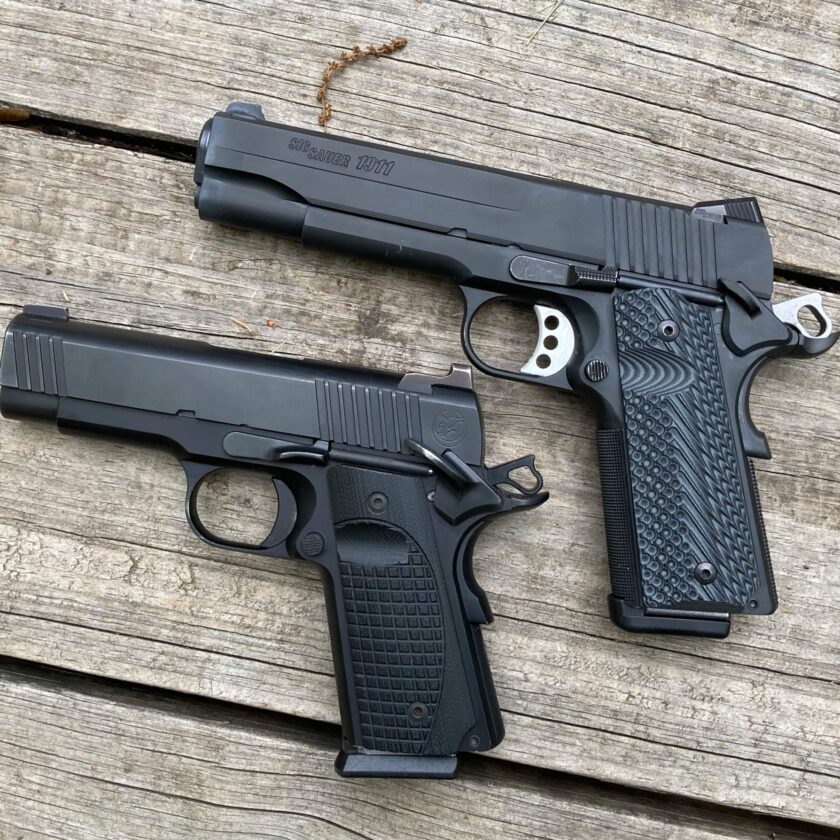
The 1911 is the comes in three basic sizes and is the original “family of firearms.” The Government model is full-sized with full grip frame and 5″ barrel. The Ruger SR1911 pictured above is a good example of a Gov’t model 1911. The Commander comes with a full grip frame and a shortened 4.25″ barrel – it’s the same as a Government model with a slightly shorter slide. The Officer 1911 comes with both a shorter grip frame, and a shorter slide – the original subcompact. My Nighthawk 1911 pictured here has an Officer-size frame, but a slightly longer barrel than the typical Officer 1911. Again, apologies for not having an example of all three.
Generally speaking I would stick to the Government or Commander models. Going much smaller than that seems to be flirting with disaster. But that’s not always the case – 1911s are individuals. Some manufacturers’ guns are better than others.
1911 Reliability: Caliber
The next major factor influencing 1911 reliability is chambering. The 1911 was built around the .45 Auto cartridge. The length of the action was designed to be just long enough for the big .45. When you scale the cartridge down to the shorter 9mm all sorts of feed geometry issues are created. A 9mm 1911 can work, but the best-case scenario is a full-size gun in .45 ACP. Fortunately/unfortunately for us the world has sort of moved on from .45 ACP.
If you want to carry a .45 I will be the last person to tell you not to, but it’s not the best choice for me. I shoot a lot, and ammunition is expensive. Forty-five ammunition is more expensive than 9mm ammunition, meaning I would be able to shoot a lot less if I shot a .45, and I already have a ton of 9mm ammo. On top of that I can shoot a 9mm a little faster than I can drive a .45, and I get an extra round or two of capacity… It doesn’t take long before the 9mm starts to look pretty good.
So now we have a dilemma: get the most reliable choice at the expense of reduced capacity and extra recoil, or roll the dice with a 9mm. It is possible to get a reliable 1911 chambered in 9×19, but you’ll probably pay more to ensure (rather than hope for) that reliability.
1911 Reliability: Other Factors
There are a couple other factors that can heavily influence 1911 reliability: maintenance, magazines, and ammunition. Let’s go in reverse order: ammunition. Don’t feed your 1911 steel-cased crap. Feed it good, high-quality, brass-cased ammunition. Your best luck will probably be with ball ammunition, but plenty of modern, rounded-ogive, JHP ammunition should function reasonably well in modern 1911s. The only way to be sure is to test, test, test.
Next: cleaning and lubrication. You should clean your 1911. A friend who I recently convinced to buy a Dan Wesson 1911 says his manual recommends cleaning every 50 rounds. I think that’s probably a bit of overkill…but it surely doesn’t hurt anything. Your Glock may run for thousands of rounds between cleanings, but it doesn’t run better because of it – it endures the lack of maintenance. I can find very little reason not to administratively clean my gun between range sessions. With the 1911 it is imperative. I will cover cleaning in a future article.
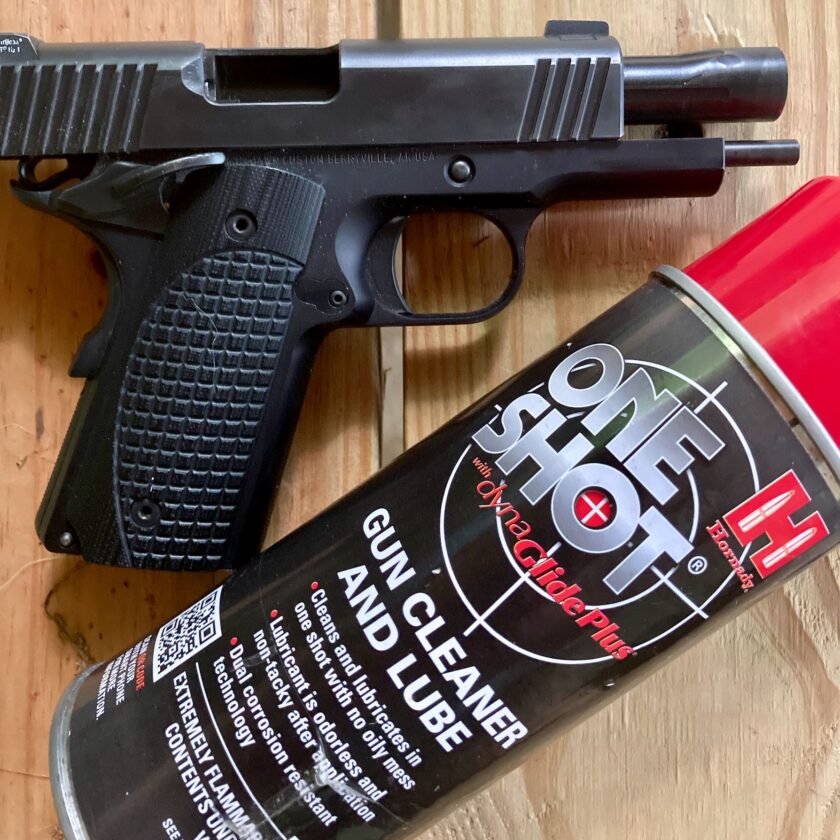
And finally, magazines. Again, the 1911 is not a pistol, it’s a pattern. The same goes for magazines. There are magazines that cost $9 and there are magazines that cost $49. You usually get what you pay for. but be sure to find one that works in your gun before investing a fortune in a bunch of them – no matter how discounted they are. As someone who has carried a 1911 personally and professional for around a decade, I swear by Wilson Combat magazines. They have worked in everything I’ve put them in.
Putting it Together
A 1911 certainly can be reliable. A 9mm 1911 can be reliable. A compact 1911 can be reliable. I wish I had some magic formula for telling you which one (and an affordable one, at that) would be perfectly reliable, but I don’t. Some of it is buying quality, some is feeding quality ammunition, some of it is keeping your gun clean, and some is using high-quality magazines. The bottom line, though, is that you can do absolutely everything right and still have issues. The only way to ensure reliability is to get on the range and prove reliability. I keep studious notes of each range session and any maintenance performed on the gun.
That sucks…but it’s really no different for any other gun. As an example I purchased a brand-spanking-new Gen5 Glock 19 back in December. It had feedway stoppages twice with high-quality, FMJ ammunition in the first 100 rounds. Nothing is completely trusted right out of the box.



